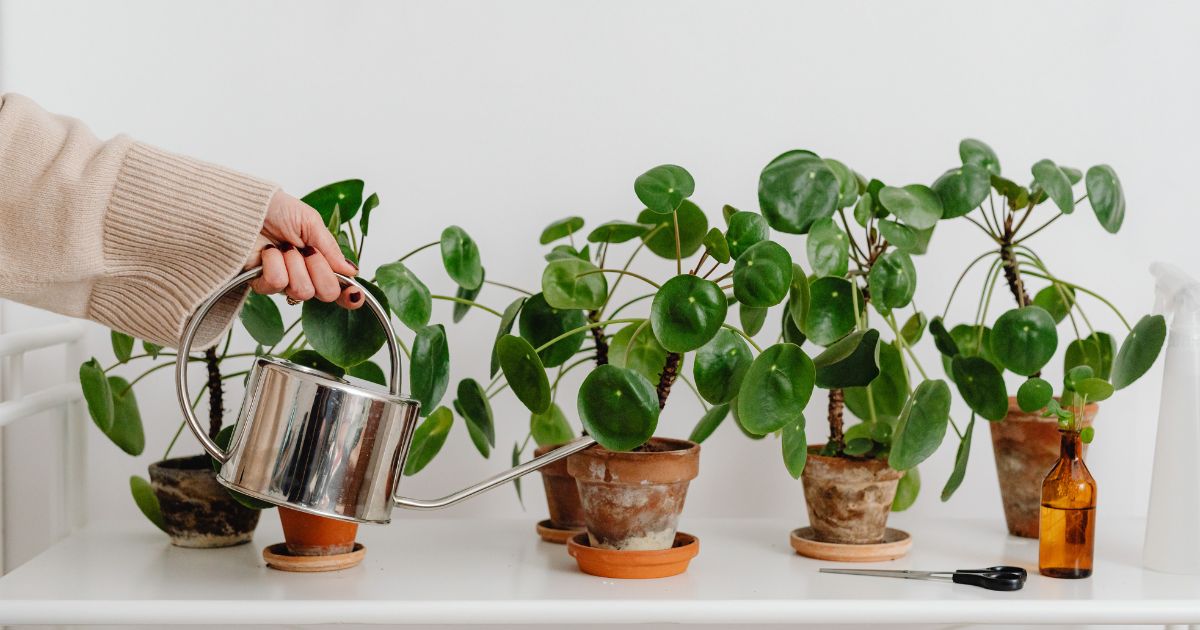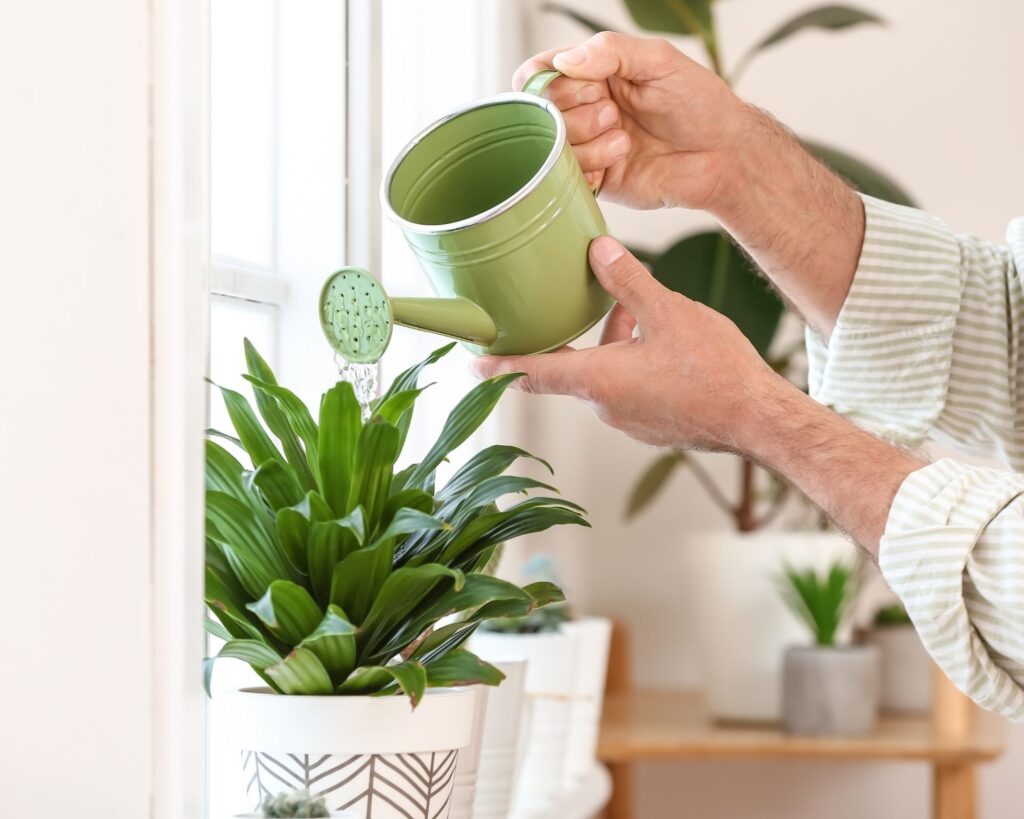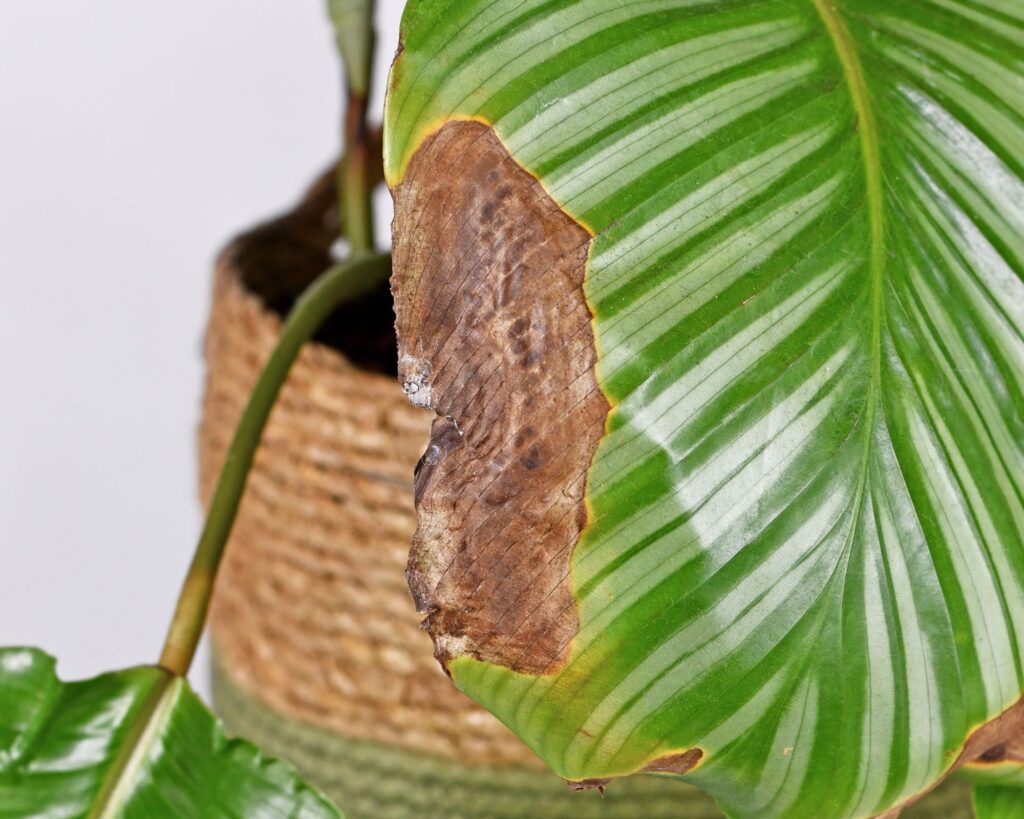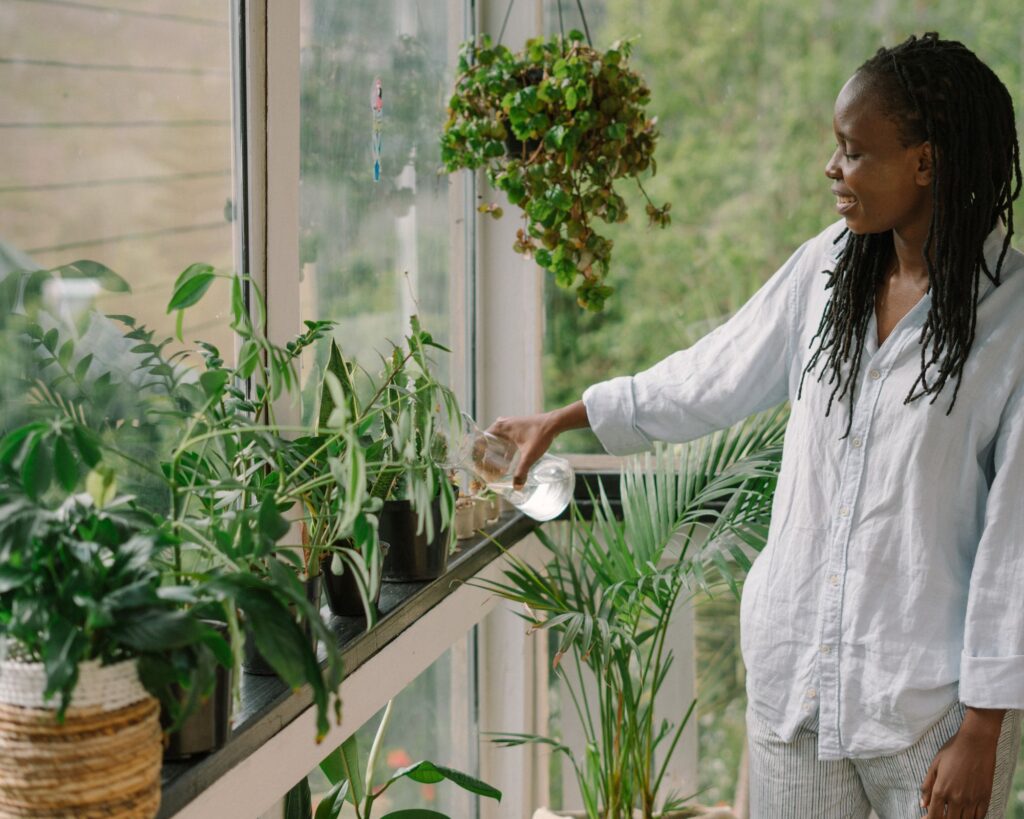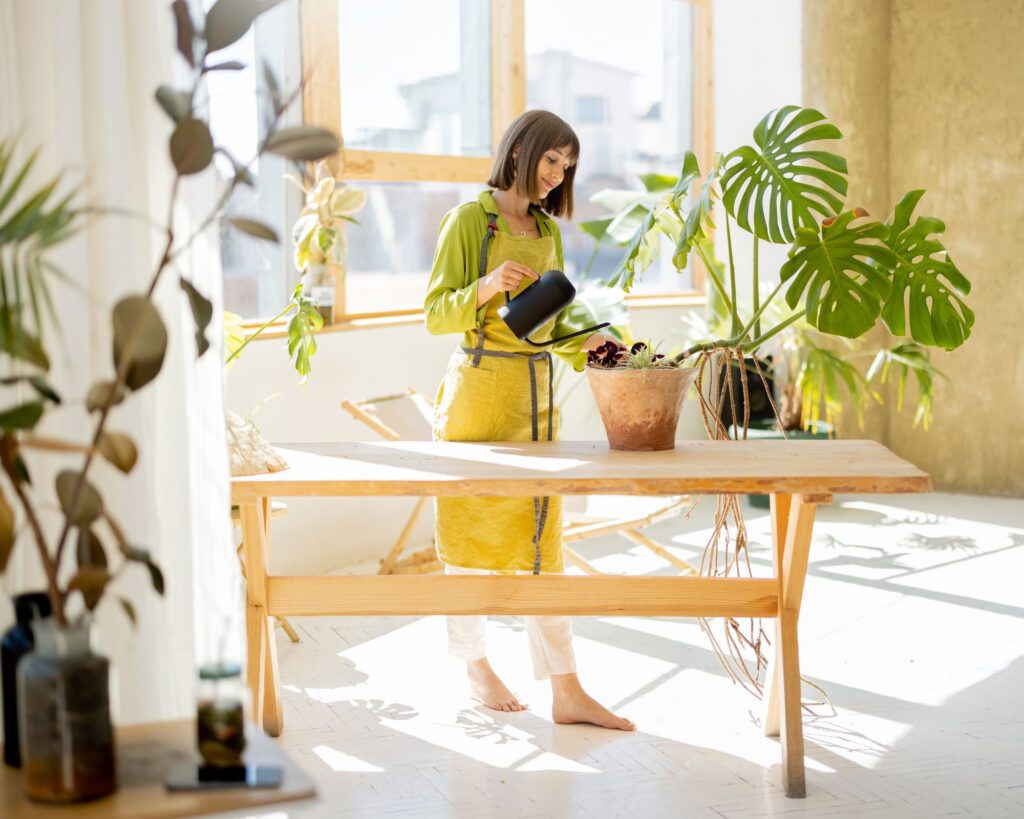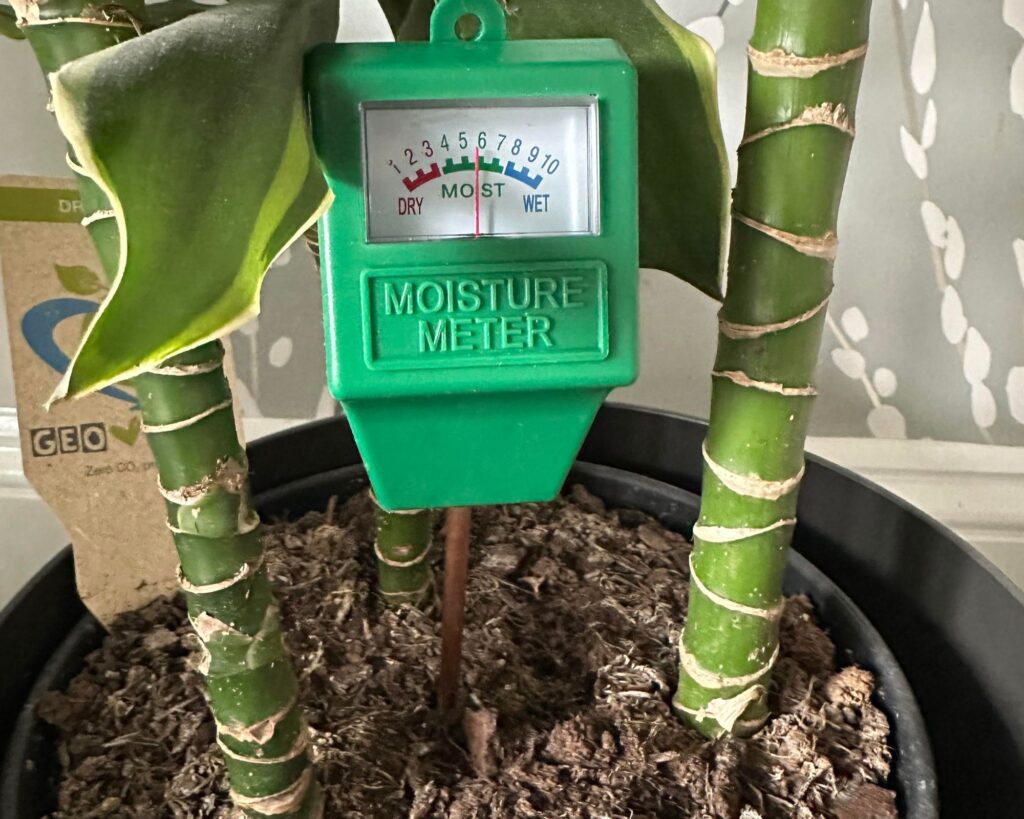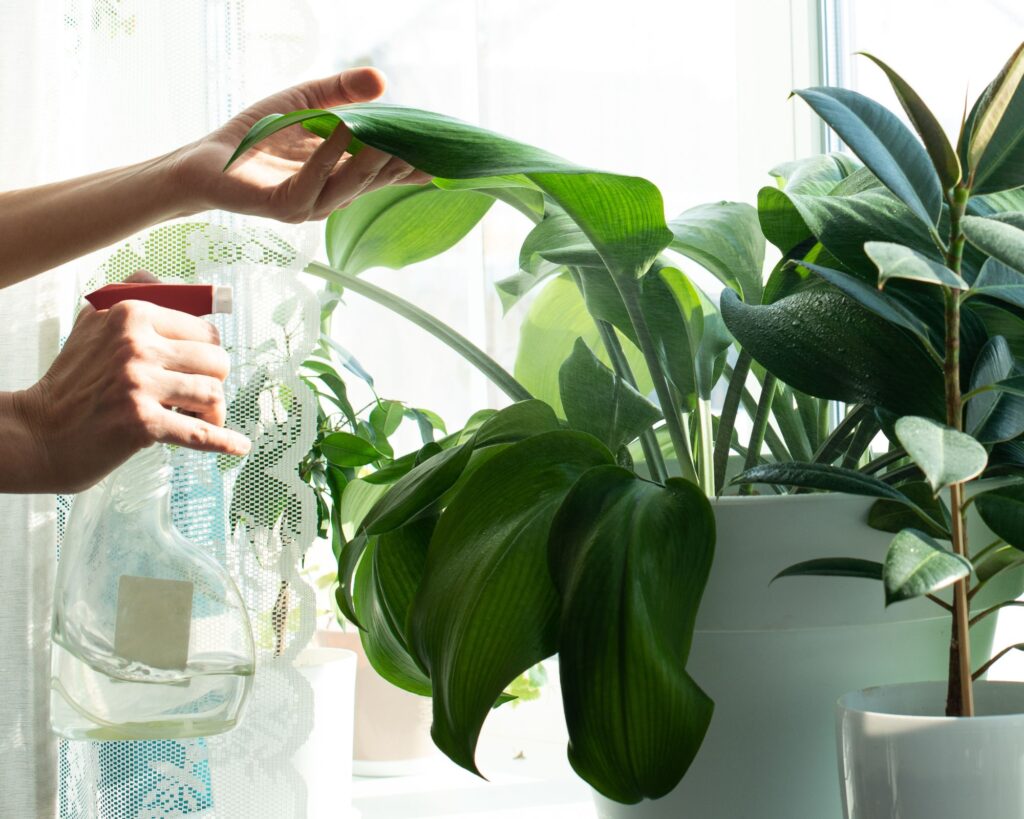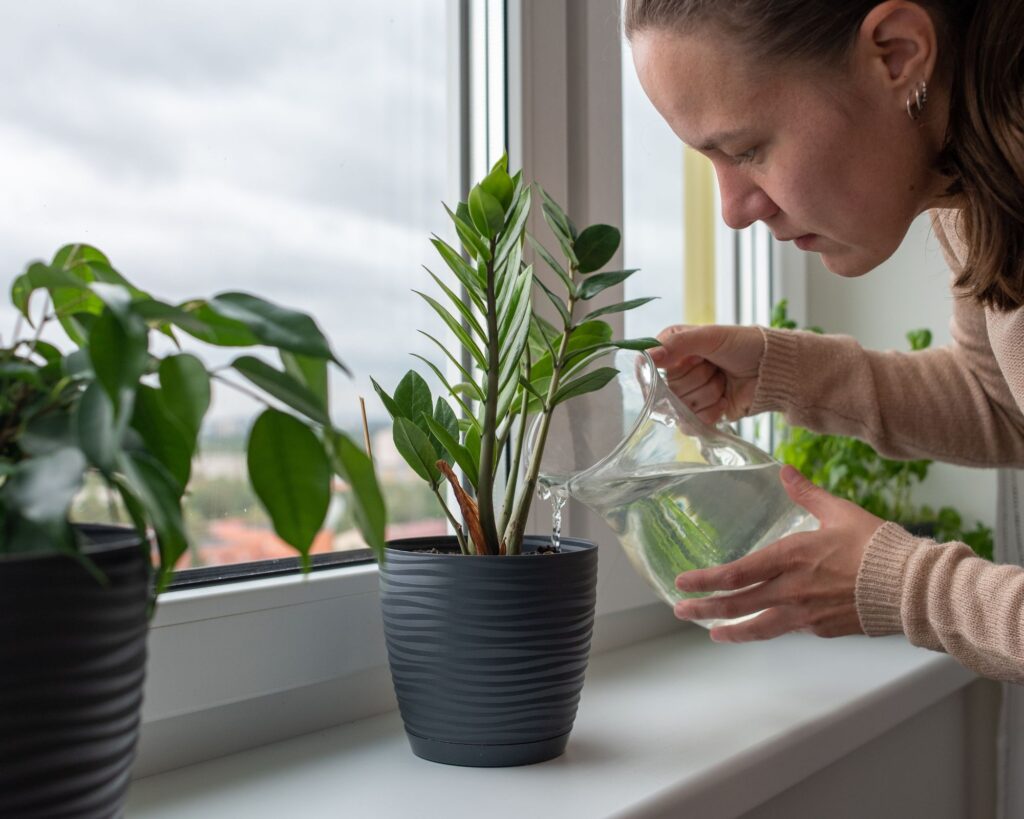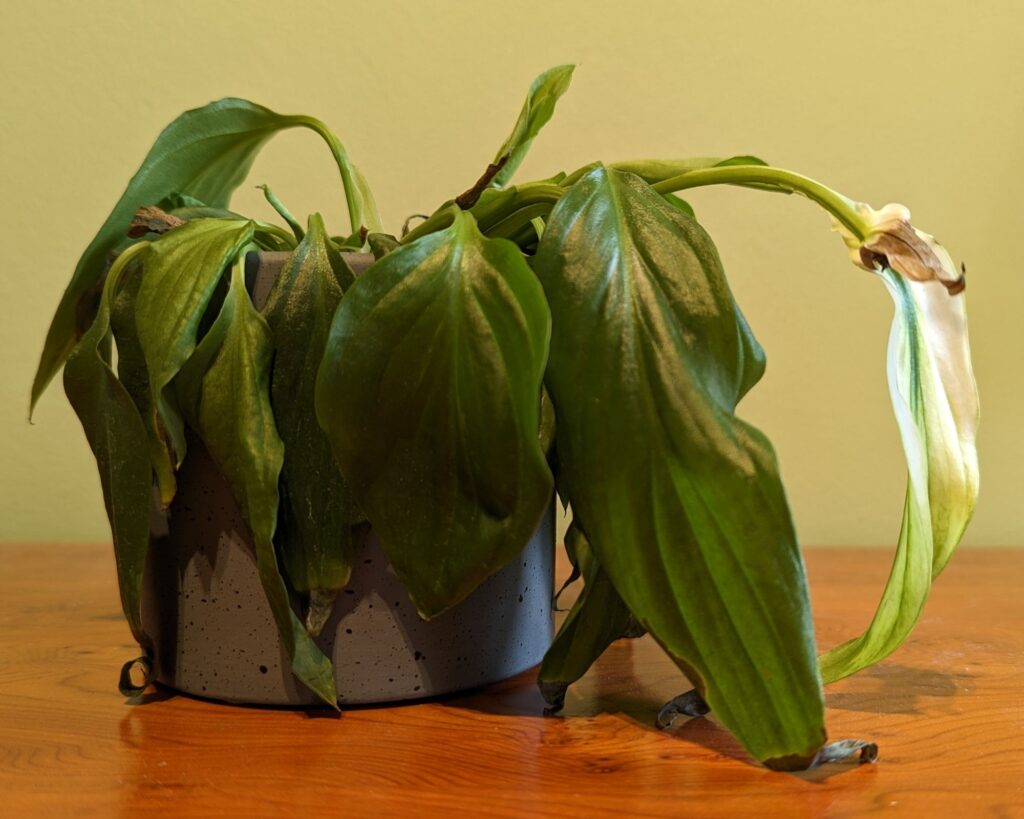As the seasons change, so do the needs of your houseplants. During the growing season, houseplants thrive with regular watering, bright sunlight, and routine care.
However, as temperatures drop and sunlight decreases in the off-season, many houseplants enter a period of dormancy. During this time, they require less water and care to stay healthy.
Adjusting your watering routine for the off-season is crucial for maintaining your plants’ vitality and preparing them for the next growing period.
In this post, we’ll explore when and how to reduce watering for your houseplants as they transition into dormancy, helping you avoid overwatering while keeping your plants healthy and ready for spring.
Understanding Plant Dormancy
Before discussing watering adjustments, it’s important to understand what happens to houseplants during the off-season. During fall and winter, many houseplants enter a natural state of dormancy or slow growth.
This is due to reduced daylight hours and cooler temperatures, both of which signal to the plant that it’s time to conserve energy. During dormancy, plants slow down their growth, photosynthesis rates decrease, and they require less water and nutrients.
Not all houseplants experience the same level of dormancy. Tropical plants like orchids, ferns, and pothos continue to grow slowly, while other varieties like succulents, cacti, and certain flowering plants may enter a deep dormancy.
Knowing the needs of each of your houseplants is the first step in adjusting your watering routine effectively.
Signs It’s Time to Reduce Watering
The transition to dormancy isn’t always abrupt, so it’s important to look for signs that indicate your houseplants are slowing down. Here are some common indicators that your plants are entering their off-season and need less water:
1. Slower Growth: If your plant is putting out fewer new leaves or stems, it’s a sign that it’s entering a period of reduced growth.
2. Leaf Yellowing or Shedding: Some plants will naturally shed older leaves in preparation for dormancy.
3. Cooler Indoor Temperatures: As your home’s indoor temperature drops, the soil takes longer to dry out, meaning plants need less water.
4. Reduced Light Exposure: Shorter days and weaker sunlight signal to plants that it’s time to slow down, reducing their water and nutrient needs.
Once you notice these changes, it’s time to adjust your watering routine to prevent overwatering, which can lead to root rot and other issues during the dormant period.
How to Adjust Watering for the Off-Season
1. Gradually Reduce Watering Frequency
One of the most common mistakes plant owners make is abruptly changing their watering routine. Instead, it’s best to gradually reduce the frequency of watering as the season transitions.
Start by extending the interval between watering sessions. For example, if you normally water your plants every week during the growing season, try extending it to every 10-14 days.
The exact frequency will depend on the type of plant and the conditions in your home. Some plants, like succulents and cacti, may only need watering once a month during dormancy. Others, like tropical plants, may still require watering every 2-3 weeks.
2. Monitor the Soil Moisture
The best way to know when to water is by checking the soil’s moisture level. During the off-season, allow the soil to dry out more between waterings. For most houseplants, the top inch or two of soil should be dry before you water again.
For cacti and succulents, let the soil dry out completely.
To check soil moisture, insert your finger about an inch into the soil or use a moisture meter. If the soil feels moist, wait a few more days before checking again.
Always avoid watering on a set schedule during the off-season, as the plant’s needs can vary based on indoor humidity, temperature, and light levels.
3. Reduce the Amount of Water
In addition to watering less frequently, you should also reduce the amount of water you use each time. During the growing season, many houseplants benefit from a thorough soak, allowing water to run through the drainage holes.
However, in the off-season, a light watering that moistens the soil without saturating it is often sufficient.
When watering during dormancy, aim to moisten only the top half of the soil. This provides enough water to sustain the plant without promoting excessive root growth or risking root rot.
4. Consider the Plant Type
Different plants have different water needs, especially during the off-season. Here’s how to adjust watering based on the type of plant:
- Succulents and Cacti: These plants are adapted to dry conditions and store water in their leaves and stems. During dormancy, they need very little water—once every 3-4 weeks is usually sufficient.
- Tropical Plants: Tropicals like ferns, pothos, and philodendrons still need some moisture but at a reduced rate. Water them every 2-3 weeks, allowing the top few inches of soil to dry out between watering.
- Flowering Plants: If your flowering plants, such as orchids and peace lilies, go dormant, reduce watering to every 3-4 weeks, but ensure they receive adequate humidity.
- Foliage Plants: Plants like snake plants and ZZ plants require minimal watering during the off-season. Once a month is often enough.
Knowing your plant’s specific needs helps tailor your watering routine to provide the right amount of moisture.
5. Adjust for Indoor Conditions
Your indoor environment changes during the off-season, affecting how often and how much you should water your houseplants. Here’s what to consider:
- Humidity: Winter air tends to be drier, especially when heating systems are in use. While you should reduce watering frequency, you may need to supplement humidity for tropical plants by misting them or placing a humidifier nearby.
- Temperature: Cooler indoor temperatures slow down evaporation, so plants don’t dry out as quickly. Adjust your watering schedule to account for slower soil drying.
- Light: With fewer daylight hours and weaker sunlight, plants don’t use water as efficiently. Place plants in the brightest spot available and adjust watering accordingly.
6. Mulching for Moisture Retention
Adding a thin layer of mulch, such as pebbles or moss, to the top of the soil can help retain moisture and reduce the need for frequent watering during dormancy.
This technique is particularly useful for tropical plants that still require some level of consistent moisture during the off-season.
Common Mistakes to Avoid
When reducing watering for the off-season, there are a few common mistakes to watch out for:
- Overwatering: This is the most common mistake. Remember that plants need less water during dormancy, so be careful not to water out of habit.
- Ignoring Signs of Thirst: While overwatering is a concern, completely neglecting watering can cause stress and damage to your plant. Monitor your plants for signs of dehydration, such as drooping leaves or shrinking stems, and adjust as needed.
- Sticking to a Schedule: During the off-season, it’s important to let the soil and plant’s needs dictate when to water rather than following a strict schedule.
Adjusting your watering routine for the off-season is essential to keeping your houseplants healthy and ready for the next growing season.
By gradually reducing the frequency and amount of water, monitoring soil moisture, and considering the type of plant and indoor conditions, you can successfully guide your plants through their dormant phase.
Remember, the key is to observe your plants and respond to their changing needs. With a little attention and care, your houseplants will emerge from the off-season refreshed, vibrant, and ready to thrive when the growing season returns.
